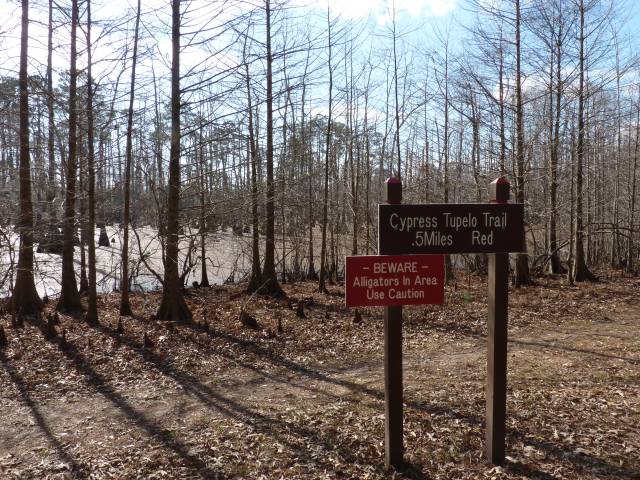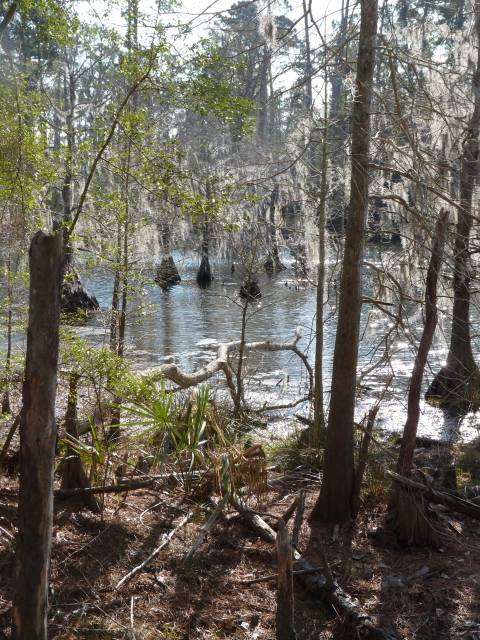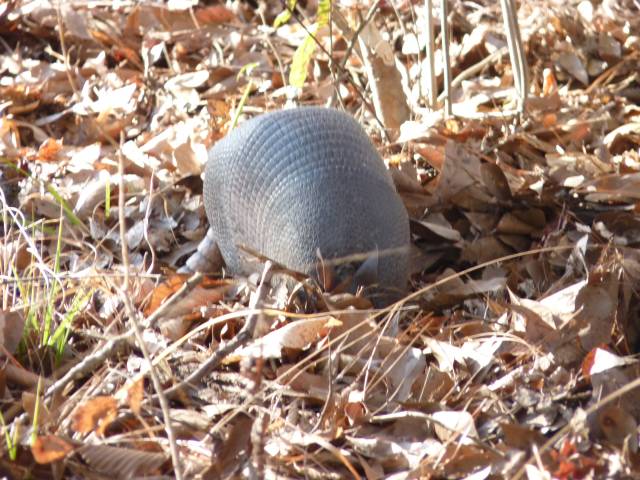We devoted one whole night to Mississippi, camping at the Shepard State Park, where we had the first chance to put our new bikes to the test.
Next morning we were in Louisiana, driving over the long bridge over Lake Pontchartrain and through New Orleans. Even from our quick drive by on the Interstate, the damage from Hurricane Katrina was very evident, with many buildings still damaged and boarded up, their residents presumably still to return to the city.
We also spotted several of New Orleans distinctive graveyards, with great tombs above ground and water level.
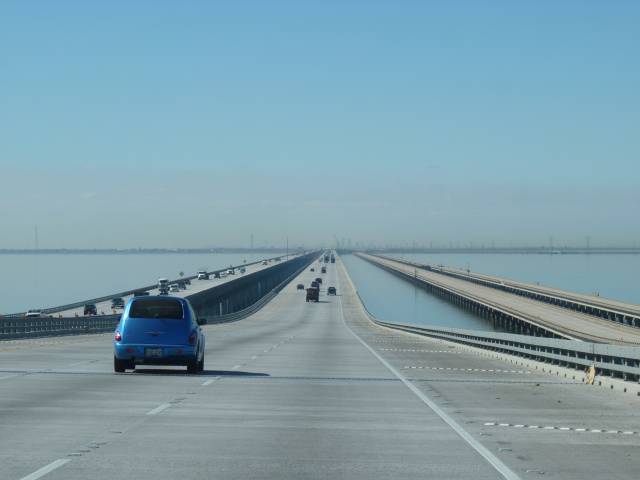
Driving over Lake Pontchartrain
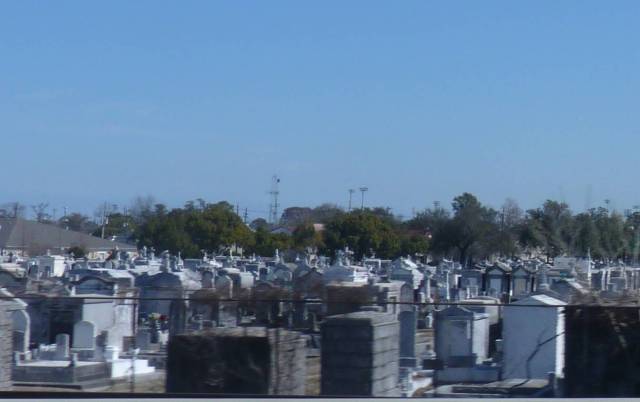
New Orleans Graveyard
Based on recommendation by Cole, our Louisiana native friend, we headed to the small town of New Iberia to sample local southern Louisiana bayou life. On checking into our campground in the town, we got into conversation with a genuine tobacco chewing and spitting local. Perhaps conversation is an exaggeration, he talked, we couldn't really understand through his thick accent!
We strolled around the campground's large pond that evening, hoping for a glimpse of the resident alligator, only to be disappointed.
One of New Iberia's claims to fame is its proximity to the Tabasco Sauce Factory on Avery Island. We visited the next day to take the tour and learn how the famous spicy condiment, apparently even a favourite of the Queen based on the factory's Royal Appointment Sign, was prepared.
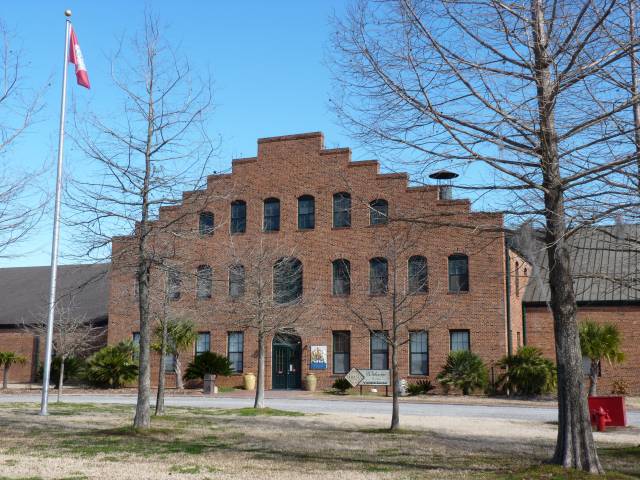
Tabasco Factory
After sampling some merchandise, we left with mouths ablaze to cycle around the neighbouring Jungle Gardens. This garden and nature reserve were created on their island by the Tabasco Sauce McIlhanny family, primarily to safeguard the future of White Egrets. These birds had been hunted almost to extinction when their plumage was prized for ladies' hats. The island was also reputed to have quite a collection of alligator residents but again we were unlucky.
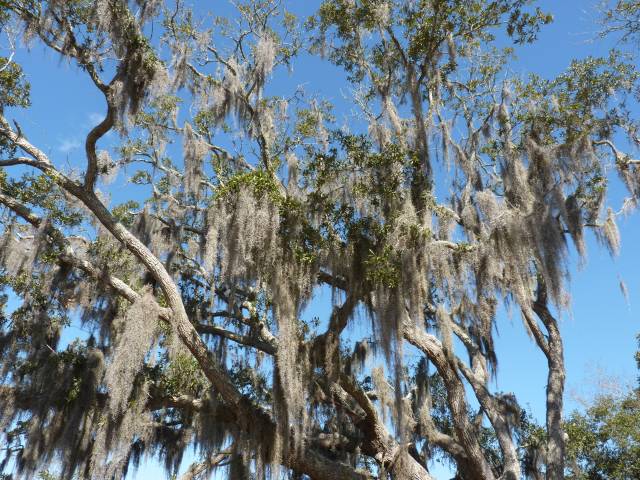
Spanish Moss at Avery Island
Trying to spot alligator in bayou waters thick with weed
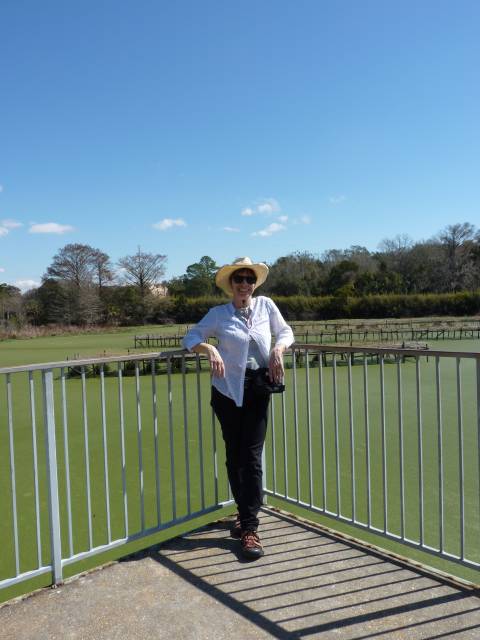
For our last attempt we headed to the town's "fancy" restaurant by now starving. There we finally spotted alligator, item number fifteen on the menu! We were here to try local fare so gave it a try, assured by the waiter that it tasted "just like chicken". Our starter arrived fried and breaded in small chunks, tasting perhaps like fishy chicken and somewhat chewier! If this and our main course was a typical Cajun selection, it seemed the local fare was mostly fried, brown and hot!
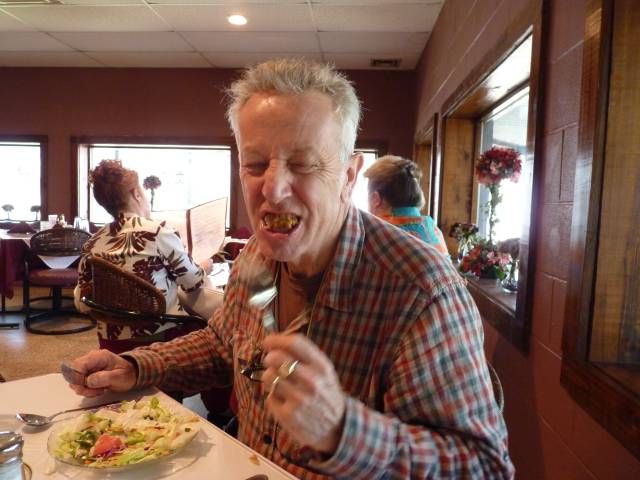
Phil working on his alligator.
Brown fried crawfish, served with brown crawfish etouffee and brown hot seafood gumbo.
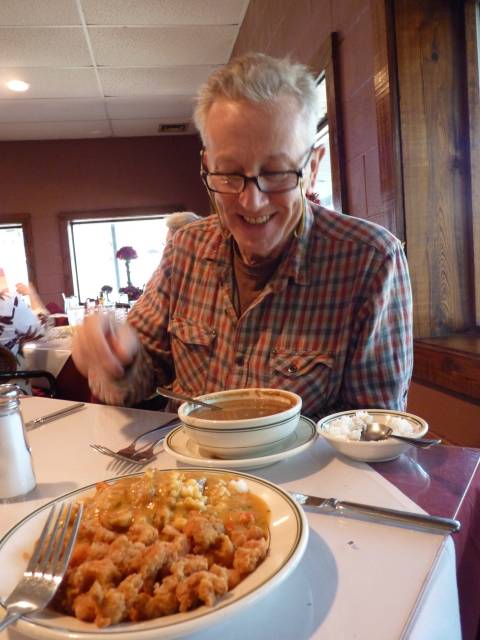
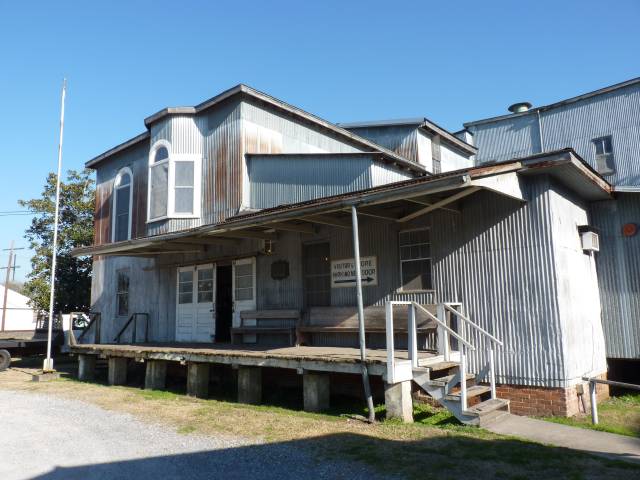
Historic Konriko Rice Mill
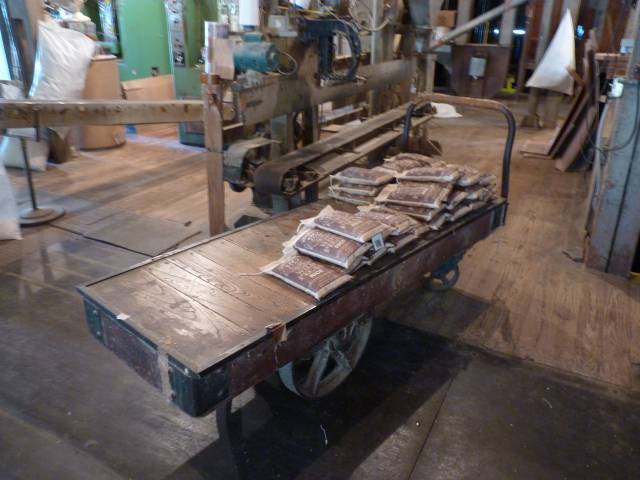
Original 1912 trolleys, still in use.
Strange rustlings in the undergrowth turned out to be the park's resident armadillos, foraging for food.
Next morning we were bound for Texas.....
